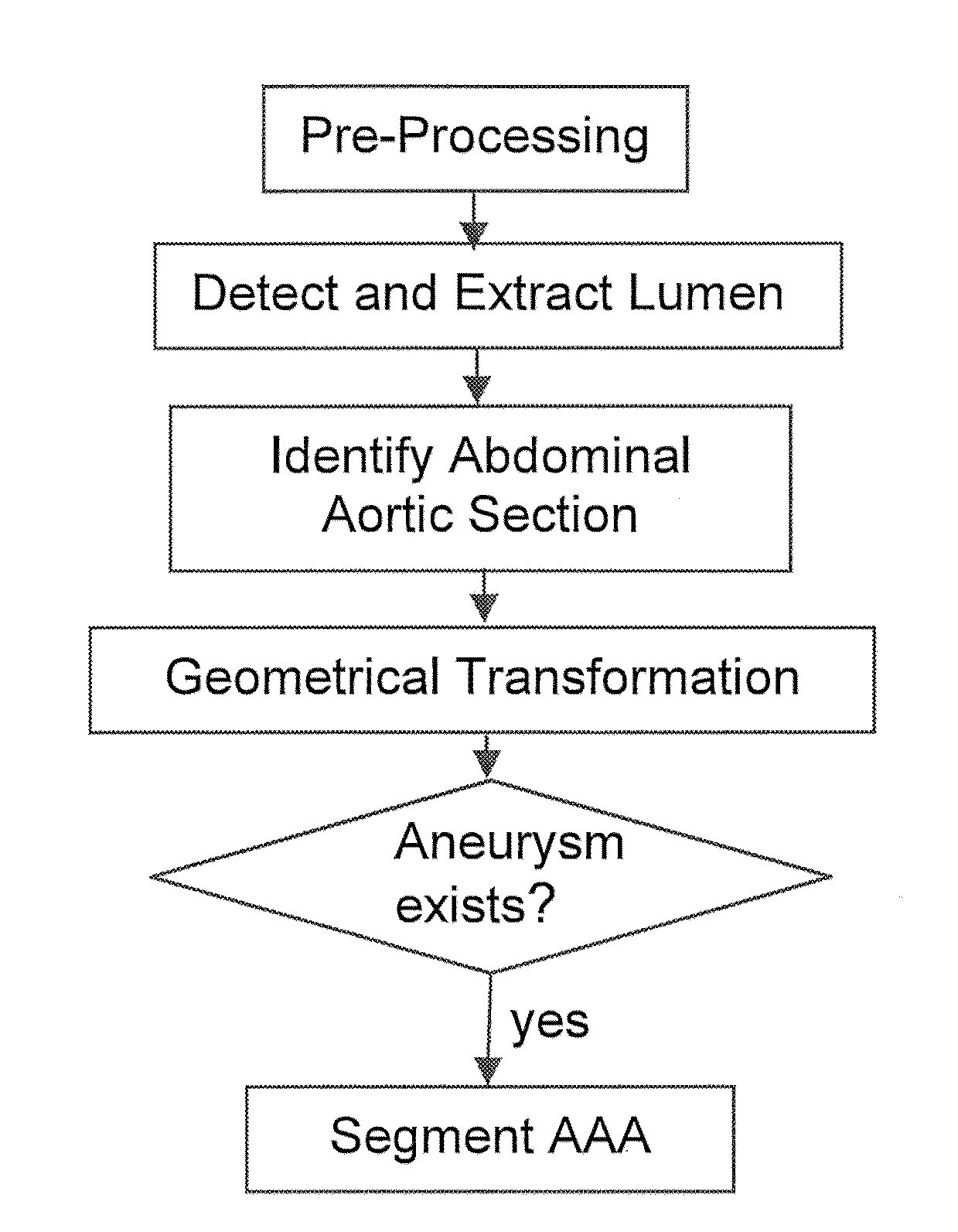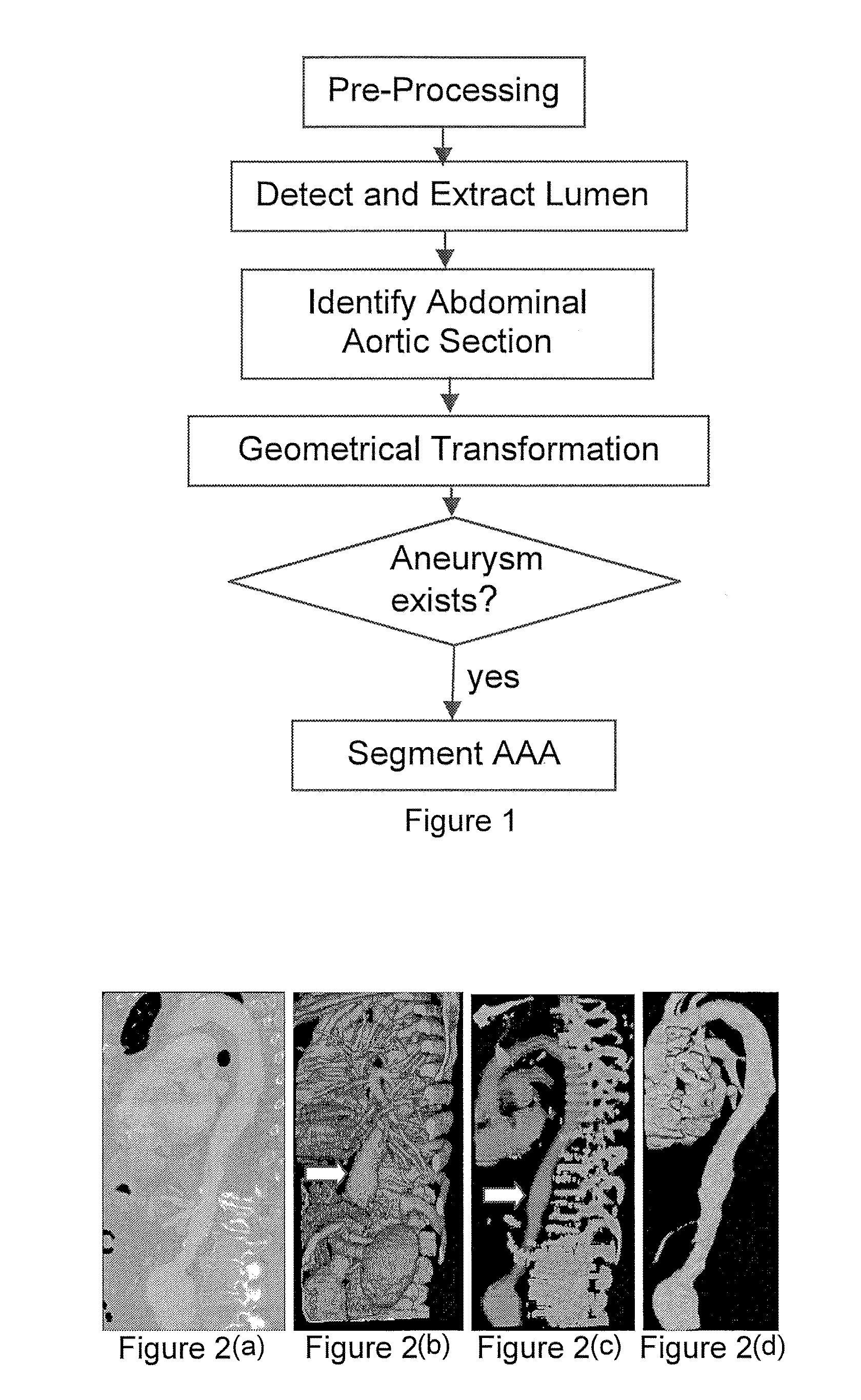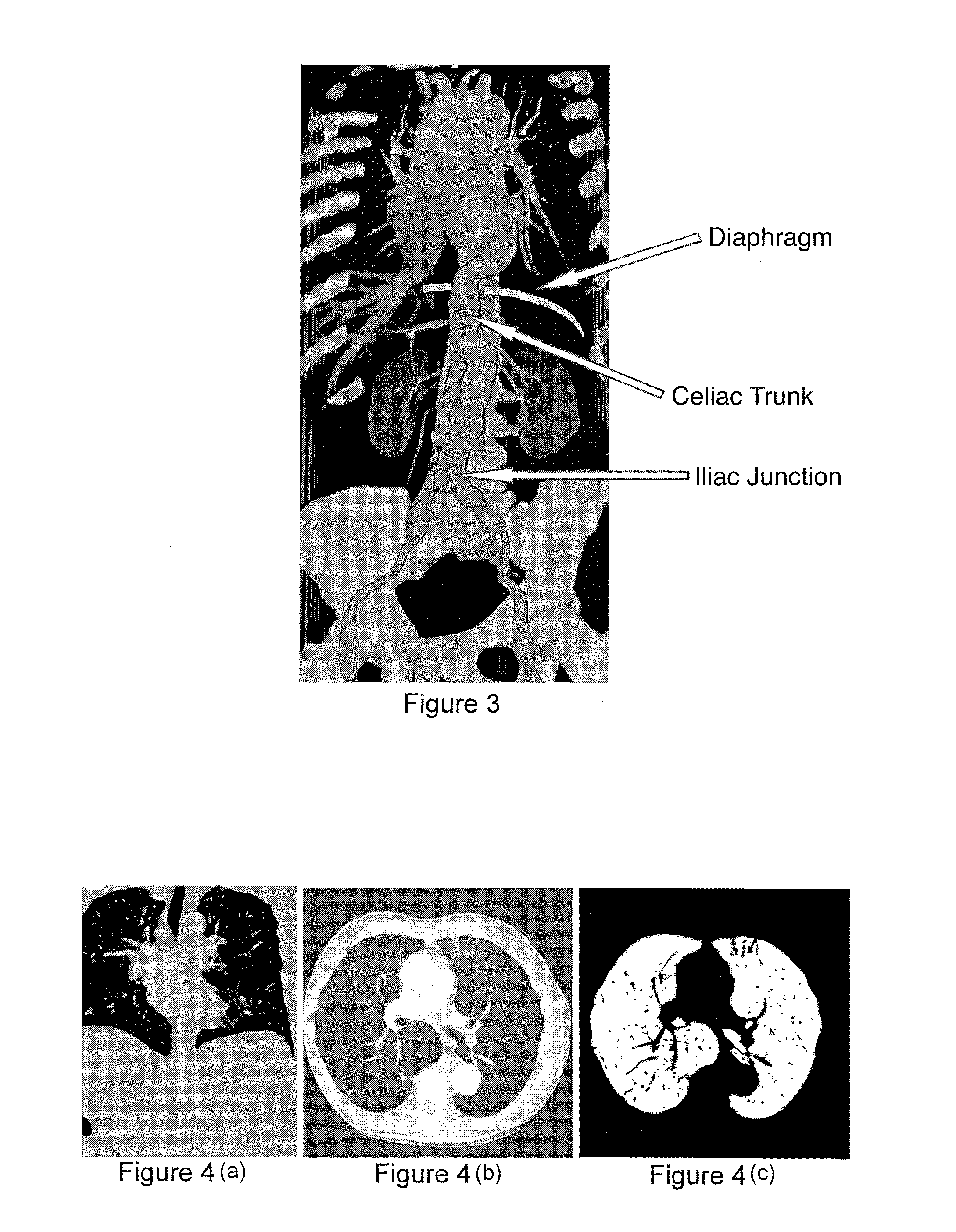Automatic detection and accurate segmentation of abdominal aortic aneurysm
an aortic aneurysm and automatic detection technology, applied in the field of automatic detection and accurate segmentation of abdominal aortic aneurysms, can solve the problems of life-threatening, inconvenient for physicians, and extremely tedious and time-consuming process that may take up to 30 minutes, and achieve reproducible and cost-effective results faster, more accurate, and the effect of saving tim
- Summary
- Abstract
- Description
- Claims
- Application Information
AI Technical Summary
Benefits of technology
Problems solved by technology
Method used
Image
Examples
Embodiment Construction
[0042]The principle of the main steps of the method are outlined as follows:[0043]1. Identify and extract the lumen.[0044]2. Identify the abdominal portion of the lumen.[0045]3. Do a geometrical transform (straightening) of the abdominal portion of the lumen.[0046]4. Search for features that indicate the presence of aneurysm.[0047]5. Segment the aneurysm, if it exists (Step 4), using the extracted lumen as an initial surface.
[0048]Each of the abovementioned steps is described in more detail below.
1) Identify and Extract Lumen:
[0049]Lumen identification is achieved through gathering prior knowledge of their shape, appearance and geometrical representations in relation to other tissues. Anatomically, the aorta (lumen) runs alongside the spine before branching off into the two main arteries that run down the legs. Further, the enhanced intensity level of lumen in the CT Angiography images assists in locating the lumen more accurately. The identification and extraction of the lumen is d...
PUM
 Login to View More
Login to View More Abstract
Description
Claims
Application Information
 Login to View More
Login to View More - R&D
- Intellectual Property
- Life Sciences
- Materials
- Tech Scout
- Unparalleled Data Quality
- Higher Quality Content
- 60% Fewer Hallucinations
Browse by: Latest US Patents, China's latest patents, Technical Efficacy Thesaurus, Application Domain, Technology Topic, Popular Technical Reports.
© 2025 PatSnap. All rights reserved.Legal|Privacy policy|Modern Slavery Act Transparency Statement|Sitemap|About US| Contact US: help@patsnap.com



